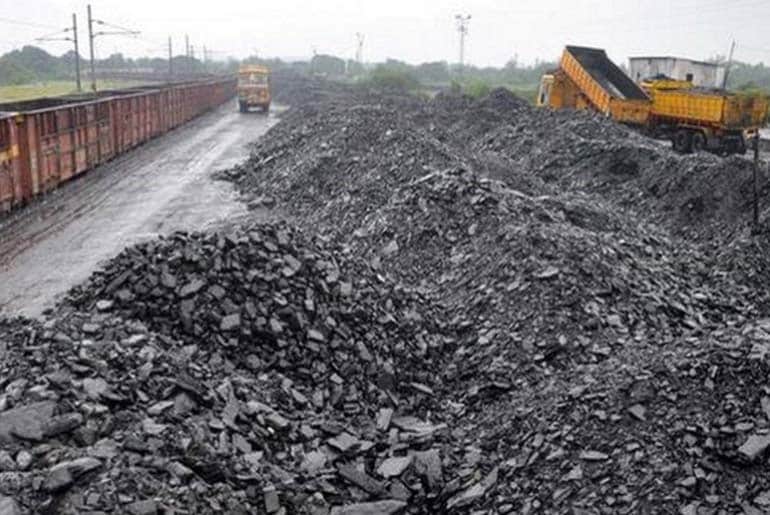What’s in today’s article?
- Why in News?
- Global Scenario of Critical and Deep-seated Minerals
- Attempts to Secure Supply-Chain Resilience by various Countries
- Case of India
- Reasons why India is Unable to Explore its Minerals
- India’s Existing Mining Policy
- How does the Mines and Minerals Bill 2023 Help?
- Some Issues with the Bill’s Proposals
Why in News?
- Recently, the Indian Parliament passed the Mines and Minerals (Development and Regulation) Amendment Bill 2023, in a bid to attract private sector investment in the exploration of critical and deep-seated minerals in the country.
Global Scenario of Critical and Deep-seated Minerals:
- A variety of minerals are crucial to a country’s manufacturing, infrastructure, and advancement.
- However, the clean energy transitions of countries including India, seeking to meet their net-zero emission goals, are contingent on the availability of critical minerals such as –
- Lithium (or white gold), cobalt, graphite, and
- Rare earth elements (REEs are crucial in making wind turbines, solar panels, etc).
- These are also crucial for the manufacture of semiconductors used in smart electronics; defence and aerospace equipment; telecommunication technologies; etc.
- According to the World Bank, the demand for critical metals such as lithium (Li) and cobalt is expected to rise by nearly 500% by 2050.
- The lack of availability of such minerals or the concentration of their extraction or processing in a few geographical locations leads to import dependency, supply chain vulnerabilities, etc.
- The Russian invasion of Ukraine has made it more clear how global supply chains of a range of commodities are vulnerable to shocks leading to a lack of availability and skyrocketing prices.
Attempts to Secure Supply-Chain Resilience by various Countries:
- Major economies including the US, UK, and EU have moved to secure supply-chain resilience for such minerals and to reduce reliance for their availability on countries like China.
- This has been done by way of the Mineral Security Partnership (MSP), which India became party to this year.
- China has majority ownership of cobalt mines in the Democratic Republic of Congo, where 70% of the world’s cobalt is mined.
- China also has by far the largest reserves of REEs (and produces 65% of the world’s REEs), followed by Vietnam, Brazil and Russia.
- Countries like the US, Australia, Japan, and the EU bloc have also created lists of critical minerals based on their specific economic needs and the supply risk of the minerals.
- The Indian Ministry of Mines recently came out with a list of 30 minerals critical to the country’s economic development and national security.
Case of India:
- India’s unique geological and tectonic setting is conducive to hosting potential mineral resources.
- Its geological history is similar to the mining-rich regions of Western Australia and Eastern Africa.
- Still, India is highly dependent on imports for a majority of 30 minerals of the above-mentioned list.
- For instance, India is 100% import-dependent on countries including China, Russia, Australia, South Africa, and the US for the supply of critical minerals like lithium, cobalt, nickel, niobium, beryllium, and tantalum.
- In the case of lithium, India’s imports were worth $22.15 million in 2021-2022. India imported 5,486.18 lakh units of lithium-ion batteries, spending $1,791.35 million.
- For deep-seated minerals like gold, silver, lead, cobalt, platinum group elements (PGEs), diamonds, etc., India depends largely on imports.
- These minerals are difficult and expensive to explore and mine as compared to surficial or bulk minerals.
- In 2022-23, India imported close to 12 lakh tonnes of copper (and its concentrates) worth over Rs. 27,000 crores.
- It imported 32,298.21 tonnes of Nickel worth Rs. 6,549.34 crore.
- India has 6% of the world’s REEs reserves and produces only 1% of global output.
Reasons why India is Unable to Explore its Minerals:
- The primary step to discovering mineral resources and eventually finding economically viable reserves is mineral exploration, which comes in various stages before mining. These stages are –
- Reconnaissance (preliminary survey to determine mineral resources),
- Prospecting (exploring, locating, or proving mineral deposits), and
- Detailed exploration (estimating of mineral ore and grade).
- It is estimated that India has explored just 10% of its Obvious Geological Potential (OGP), less than 2% of which is mined and the country spends less than 1% of the global mineral exploration budget.
- A majority of exploration projects have been carried out by the government agencies – Geological Survey of India and PSUs like Mineral Exploration Corporation Limited (MECL) – with very little private sector participation.
- This is mainly due to lack of policy support and inadequate incentives for the private sector.
- Exploration requires highly specialised, time-intensive and monetarily risky operations (aerial surveys, geological mapping and geochemical analyses) with less than 1% of explored projects becoming commercially viable mines.
- Indian PSUs had not fared well when it came to deep-seated and critical minerals.
India’s Existing Mining Policy:
- The Mines and Minerals (Development and Regulation) Act 1957, the primary legislation governing mining in the country has been amended several times.
- Under this, private companies could also get Prospecting Licences (PL) or Mining Leases (ML), and could even apply for early-stage or greenfield exploration through Reconnaissance Permits (RPs).
- In the early 2010s, as the mining industry seemed to be gathering momentum, concerns about favouritism and misuse started coming up in the allocation of 2G spectrum and natural resources like coal blocks.
- The Supreme Court ruled in 2012 that the First Come First Serve method of resource allocation was vulnerable to manipulation, favouritism, and misuse, asking the government to adopt a transparent method.
How does the Mines and Minerals Bill 2023 Help?
- The Bill six previously mentioned atomic minerals (lithium, beryllium, niobium, titanium, tantalum and zirconium) from a list of 12 which cannot be commercially mined (reserved for government entities).
- These six minerals are now being put into a list of “critical and strategic” minerals.
- The Bill allows prohibited activities under the Act like pitting, trenching, drilling, and sub-surface excavation as part of reconnaissance, which included mapping and surveys.
- The Bill also proposes a new type of license to encourage reconnaissance-level and or prospective stage exploration by the private sector.
- This exploration licence (EL), for a period of five years (extendable by two years), will be granted by the state government by way of competitive bidding.
- This license will be issued for 29 minerals specified in the Seventh Schedule of the amended Act, which would include critical, strategic, and deep-seated minerals.
- It also specifies the maximum area for exploration – activities in upto 1,000 sq kms will be allowed under a single exploration licence.
Some Issues with the Bill’s Proposals:
- A process could take years to materialise owing to government timelines for clearances or may not happen at all considering the complexity of the deposit and geography.
- The explorer would not know how much revenue they will receive as the auction premium would be known only when a mine is successfully auctioned.
- Only the government can auction what an explorer has discovered and the latter would only get a share of the premium at an unknown stage.
- This is unlike other global jurisdictions where private explorers can sell their discoveries to miners.
- The SC had observed (in 2012) that since big capital investments go into discovering natural resources, companies would only spend big amounts if they’re assured of utilising any discovered resources.
Q1) What is the Mineral Security Partnership (MSP)?
The Minerals Security Partnership (MSP) is a US-led alliance launched in June 2022. It seeks to secure a stable supply of raw materials for their economies. As of July 2023, the MSP was composed of: Australia, Canada, Finland, France, Germany, India, Japan, South Korea, Sweden, the UK, US, and the EU.
Q2) What are rare earth elements (REEs)?
The rare earth elements (REE) are a set of 17 metallic elements. These include the 15 lanthanides on the periodic table plus scandium and yttrium. Rare earth elements are an essential part of many high-tech devices.
Source: Explained | The push to bring the private sector into mineral exploration
Last updated on December, 2025
→ Check out the latest UPSC Syllabus 2026 here.
→ Join Vajiram & Ravi’s Interview Guidance Programme for expert help to crack your final UPSC stage.
→ UPSC Mains Result 2025 is now out.
→ UPSC Notification 2026 is scheduled to be released on January 14, 2026.
→ UPSC Calendar 2026 is released on 15th May, 2025.
→ The UPSC Vacancy 2025 were released 1129, out of which 979 were for UPSC CSE and remaining 150 are for UPSC IFoS.
→ UPSC Prelims 2026 will be conducted on 24th May, 2026 & UPSC Mains 2026 will be conducted on 21st August 2026.
→ The UPSC Selection Process is of 3 stages-Prelims, Mains and Interview.
→ UPSC Result 2024 is released with latest UPSC Marksheet 2024. Check Now!
→ UPSC Prelims Result 2025 is out now for the CSE held on 25 May 2025.
→ UPSC Toppers List 2024 is released now. Shakti Dubey is UPSC AIR 1 2024 Topper.
→ UPSC Prelims Question Paper 2025 and Unofficial Prelims Answer Key 2025 are available now.
→ UPSC Mains Question Paper 2025 is out for Essay, GS 1, 2, 3 & GS 4.
→ UPSC Mains Indian Language Question Paper 2025 is now out.
→ UPSC Mains Optional Question Paper 2025 is now out.
→ Also check Best IAS Coaching in Delhi

















